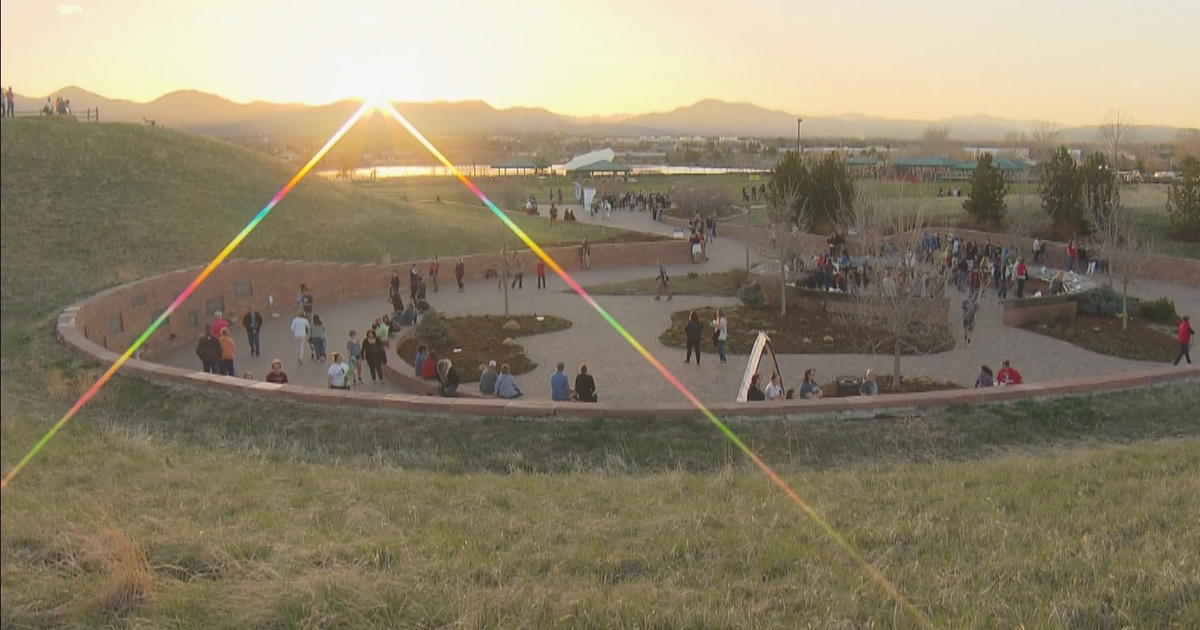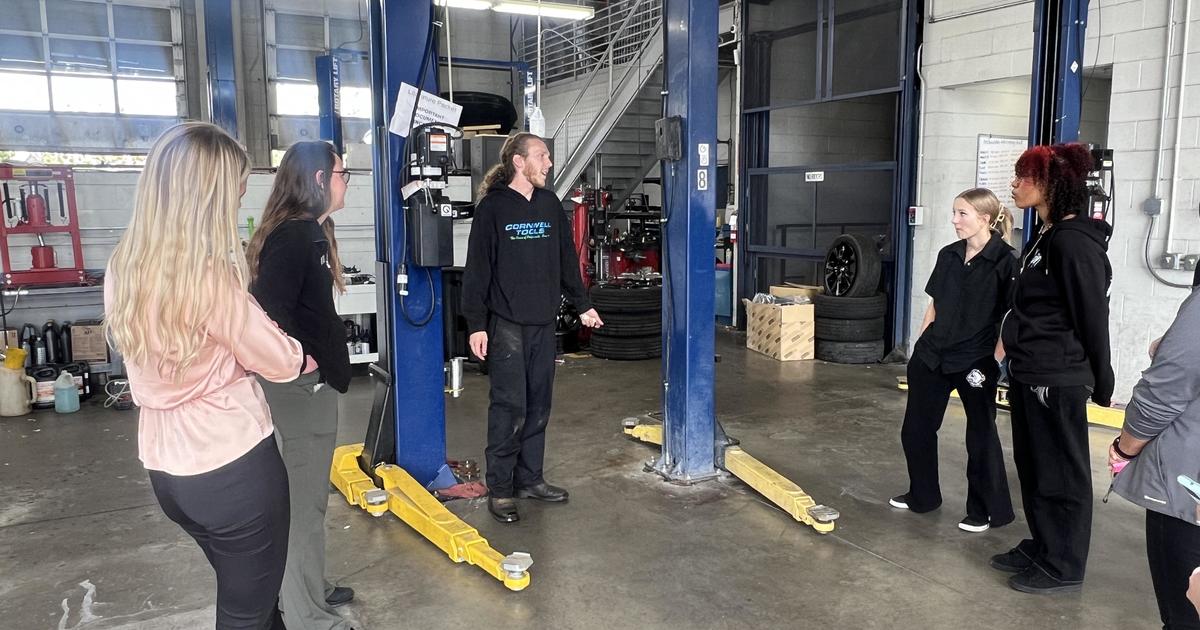Olathe Corn Farmer: Drought Could 'Devastate This Valley'
OLATHE, Colo. (AP) — John Harold charges his Chevy through chest-high stalks of sweet corn.
He's talking on his phone, scribbling notes. He's got corn-harvesting crews spread across the Uncompahgre Valley, picking more than 100,000 ears a day of his trademarked Olathe Sweet.
The fields of onions need weeding. His beans, too. More than 100 fields of corn need picking. An 80-man crew is stuck on the Mexican border of Texas, waiting for temporary H2A work visas from an inexplicably closed embassy, costing him $2,500 a day as they linger. He's got a contract with Kroger to deliver more than 30 million ears of his succulent corn to grocery stores across the country.
Harold has a lot going on.
Up on the Uncompahgre Plateau, the snow is long gone and a hot wind rattles brittle stalks. It's too early for the snow to be gone, he said on July 11, the second day of his month-long corn harvest.
He's running low on water. But after 32 years as Colorado's king of corn, he knows not to worry too hard about things beyond his control.
"This here is a tough racket, and this year is a tough one, for sure," says the spry, multi-tasking 77-year-old. "We knew going into this season that we had enough water storage for the crop this year. What we don't know is if we'll have that next year. If we don't have water, it would devastate this valley. I'll just turn in my keys to the man at the bank and let him give it a go."
That's the mantra reverberating across agricultural communities right now as they negotiate the fourth-driest water year and the third-hottest summer in more than a century of record keeping in Colorado. If the upcoming winter isn't huge, this drought will ravage the state's $40 billion agricultural industry, sending shockwaves that will be felt for years to come.
Ranchers and farmers are suffering this summer. Ditches are dry. Reservoirs are emptying earlier than ever. Springs and seeps that once sustained pastures are drying up. Cattle are heading to market months early as hay prices skyrocket and pastures wither in the rainless heat. Fruit growers are scrambling to water precious orchards that can't simply lie fallow in the way some of Harold's corn fields can.
Municipalities are amplifying long-standing efforts to increase storage after a dry season that has served as yet another exclamation point on a drought that has lingered for nearly two decades.
The City of Aspen has backed off long-held hopes to build dams and reservoirs up both Maroon Creek and Castle Creek drainages while spending almost $3 million on 61 acres near Woody Creek for a potential reservoir.
After 15-years of work, the $1.1 billion Northern Integrated Supply Project is in the final stages of federal permitting, with plans to develop the 170,000 acre-foot Glade Reservoir to capture Poudre River water and the 46,600 acre-foot Galeton Reservoir collecting off the South Platte River. Those new reservoirs and a network of pipelines would serve 11 northern Colorado communities that are expected to see their total population more than double to 500,000 by 2050.
Increasingly thirsty communities worry Colorado's farmers and ranchers, who account for about 89 percent of the water used in Colorado.
But most of the water — 60 percent actually, around 8.4 million acre-feet — that originates in Colorado rolls out of state.
Colorado — really its farmers and ranchers — are stewards for increasingly bibulous downstream states. Just about all the water that feeds Arizona, Nevada and southern California originates in Colorado and the Centennial State's largest users of that water toil harder with every passing season to eke savings from the gushing supply.
But even with aggressive conservation, that historic torrent of Colorado water has become a trickle in this 19th year of relentless drought, with water levels in the two major reservoirs on the over-allocated Colorado River — Lake Powell and Lake Mead — nearing crisis. (Upstream, reservoirs in Colorado are faring no better, with the state's largest, Blue Mesa near Gunnison, at only 39 percent full, its lowest level since 1987.)
Powell is currently less than half full, down 94 feet from 2000. Lake Mead is only 38 percent full.
The Colorado River Research Group, an assembly of university professors who specialize in water management, law and science in the West, have suggested it's time to rethink how those two reservoirs work together. Specifically, maybe it's time to drain Powell.
"If storage in Lake Powell cannot rebound in an era where the Upper Basin consumes less than two-thirds of its legal apportionment, then the crisis is already real," reads an explosive report from the research group, which projected Lake Powell would end 2018 at such a low level — less than 3,600 feet, down almost 100 feet from 2000 — that the Glen Canyon Dam's hydropower facilities could be hindered. The impacts of that include losing funding for environmental programs supported by the dam's electricity and, ultimately ending any releases heading downstream into Mead.
"Our hydrology is changing; so must our water-use practices," reads the research group's report, which called the present situation at Powell "untenable" and revived a once radical idea of draining Powell, leaving Mead as the sole storage facility for Arizona, Nevada and California, part of a growing chorus of scientists supporting the "Fill Mead First" notion.
On the ground in Colorado, farmers are feeling the early signs of a looming water crisis triggered by warming temperatures that scientists say marks one of the driest 20-year periods in the past 1,200 years.
"We have no water after the fifth of August. No water and no ability to get augmented water," says Ed Tuft, who planted about 4,500 new apple trees in the past two years, giving him almost 400,000 fruit trees spread across 400 acres along the trickling North Fork of the Gunnison River.
The Paonia Reservoir emptied on Aug. 5, one of the earliest dates since the 18,150-acre-foot irrigation water storage facility was built in 1962. And they started filling the reservoir in December, one of the earliest starts ever for the reservoir that waters more than 15,000 acres of farm and ranchland.
The North Fork of the Gunnison River Basin — which stretches more than 33 miles from Paonia Dam to the Gunnison River below the Black Canyon and irrigates more than 15,000 acres of farm and ranchland — saw snowpack fall to 52 percent of average last winter, marking one of the basin's worst winters on record.
That compares to 63 percent in 2002 and 74 percent in 2012, the previous benchmarks in a prolonged drought that has lingered for 19 years.
"But this season, this season is worse and our records show that," says Dixie Luke, president of the Fire Mountain Canal and Reservoir Company that distributes Paonia Reservoir water to 488 shareholders along 35 miles of ditches. "We probably would not have filled that reservoir if we had started after December. We usually start mid-April but we saw this coming. No fall moisture. No snowpack. The fruit growers are struggling. Many of us are concerned about our hay crop. Things could get ugly without heavy snow this winter."
The fruit growers — the minority of shareholders in the Fire Mountain network — begged Luke to limit the flow through the ditch, which they hoped would prolong their irrigation season. Luke said transit loss through the earthen ditch — seeping into weeds or evaporating — is the same at 75 percent flow as it at 100 percent flow.
"So it doesn't make sense to run less. We didn't think we'd gain anything," she said.
Hogwash, says Tuft. A bit of water loss in the ditch would be worth a longer season for his fragile young trees.
"When you have fruit trees and the water turns off, you are in trouble," says Tuft, who spent $250,000 renting water, building reservoirs and revamping his irrigation systems from sprinklers to drips, all of which allowed him to keep his trees wet through the first week of September.
"We have managed to beg, borrow and rent water. We are old timers here so we know how to do that," says Tuft, whose family founded Leroux Creek Foods in Hotchkiss in the 1980s producing Honeycrisp apples in the North Fork Basin. "But I do know quite a number of others who have not had water on their trees since Aug. 5 and I just don't see how those trees are going to survive. All the old timers I talk to around here, every one of them tells me this is the worst drought in history."
By JASON BLEVINS and KEVIN SIMPSON
(© Copyright 2018 The Associated Press. All Rights Reserved. This material may not be published, broadcast, rewritten or redistributed.)



